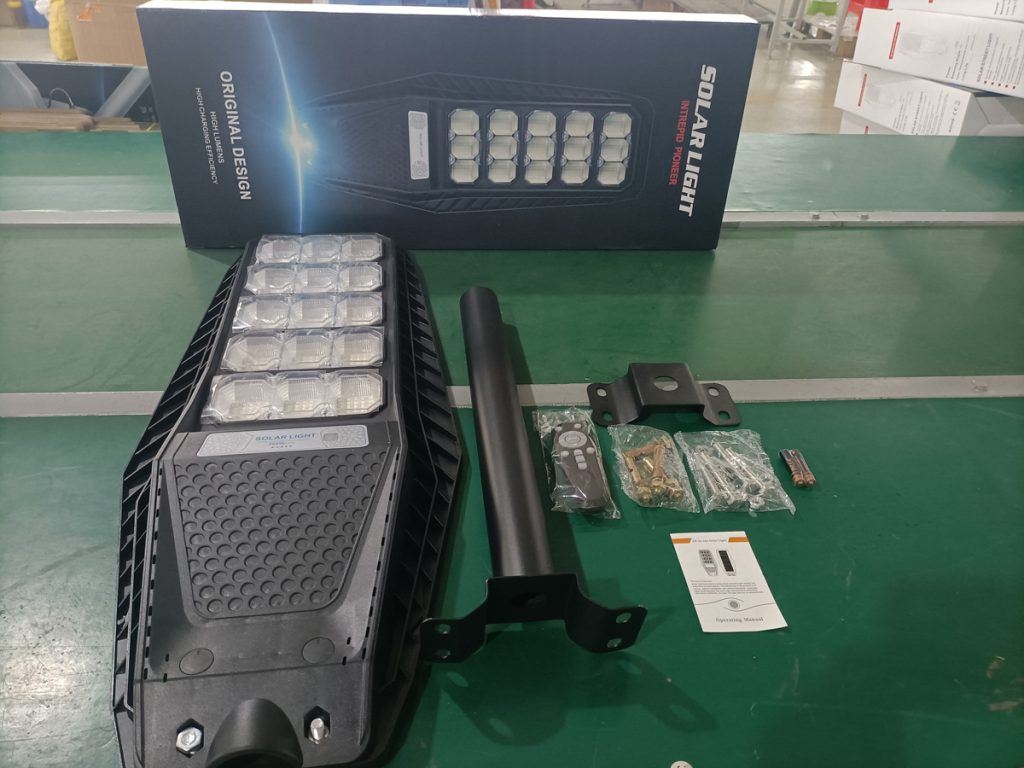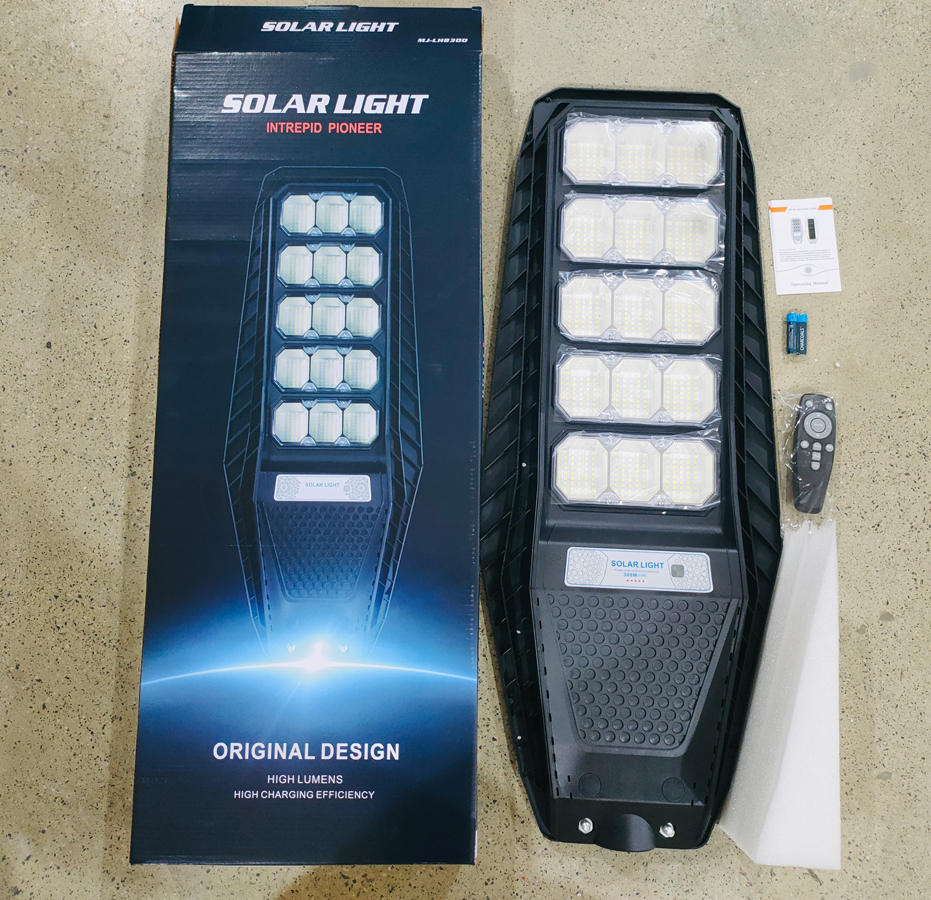Solar Street Light’s Actual Power is Constantly Changing
Before discussing how to calculate the actual power of solar street lights, it should be noted that
the actual power of solar street lights is constantly changing( see article for details). No matter which method we use,
we can only calculate an approximate actual power, which is basically equivalent to the average
power of the solar street light during its high brightness period. Therefore, this value is highly
referenceable.
Why the actual power of solar street lights is constantly changing:
- Before leaving the factory, most solar street lights are set with 3-6 levels of power output.
Taking all-night operation as an example, the most common settings are as follows:
High brightness period (2-4 hours): 1 hour at 100% brightness + 2 hours at 60%-70% brightness
Secondary brightness period (1-2 hours): 2 hours at 40% brightness
Low brightness period (6-7 hours): 6 hours at 10% brightness
Secondary brightness period (1-2 hours): 2 hours at 30-40% brightness
In this case, the full power operation time of the street light is about 4.5 hours. Of course, the full
power operation time set by each manufacturer will vary according to customer requirements. - Automatic power reduction function of the controller
The controller adjusts the output power automatically based on the battery voltage each time it
discharges, within the set data (not exceeding the set value).
Solar Street Light Actual Power Calculation Method 1: Clamp Meter Measurement
If you happen to have a programming remote control that matches the solar street light
controller, you can read the parameters to directly know the actual power of the solar street light.
However, end users generally do not have a programmer, but a DC clamp meter can be obtained.
Why use a clamp meter? Because it is more convenient to measure current with a clamp meter,
while a multimeter is more cumbersome. However, be sure to use a clamp meter that can
measure DC current, and pay attention to the current range value when testing. The testing steps
are as follows:
- Fully charge the battery
- Disconnect the charging cable and enter discharge mode
- Test the controller’s connection to the light source
- Measure the output voltage and current
- Calculate the actual power of the solar street light
The clamp meter measurement method is the simplest and most direct method. If you are
patient enough, you can measure the power every hour to find out how the manufacturer has set the solar street light’s power.
Solar Street Light Actual Power Calculation Method 2: Solar panel power Reverse Calculation
The solar panel’s reverse calculation of solar street light actual power is based on the premise
that the daily power generation of the solar panel equals the daily power consumption of the
light source.
Solar panel daily power generation = solar panel power x peak sunshine hours / 2.22
Light source daily power consumption = solar street light actual power x full power working time
【Note】2.22 is the coefficient calculated from the battery’s Coulomb efficiency and the solar
panel’s charging efficiency. This value may vary for different voltage systems, but we won’t
complicate it here, and the controller’s conversion efficiency is not included.
The calculation formula is: Light source actual power = solar panel power x peak sunshine hours /
light source full power working time / 2.22
Solar Street Light Actual Power Calculation Method 3: Battery Capacity Reverse Calculation
The premise of this method is that the discharge depth of lithium batteries is controlled at 50%,
which means using up the battery power in 2 days, representing 2 consecutive rainy days. Some
solar street lights on the market use up all the battery power in one day, which we do not
recommend, as continuous deep cycling has a significant impact on battery life. Some use up the
battery power in 3 days. However, due to cost reasons, most use up the battery power in 2 days,
and this can be adjusted as needed.
Therefore, battery power (WH) = solar street light actual power x full power working time x 2 /
discharge depth (90% for lithium batteries)
Battery capacity (AH) = WH / V
So: Light source actual power = battery capacity x battery voltage / 2.22 / light source full power
working time


